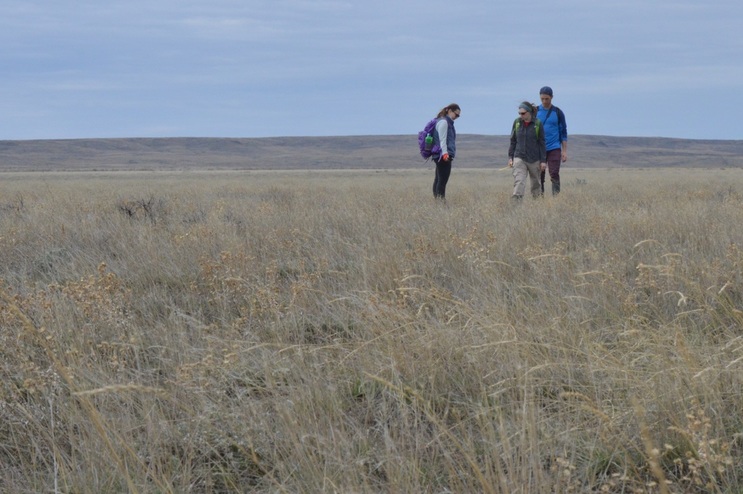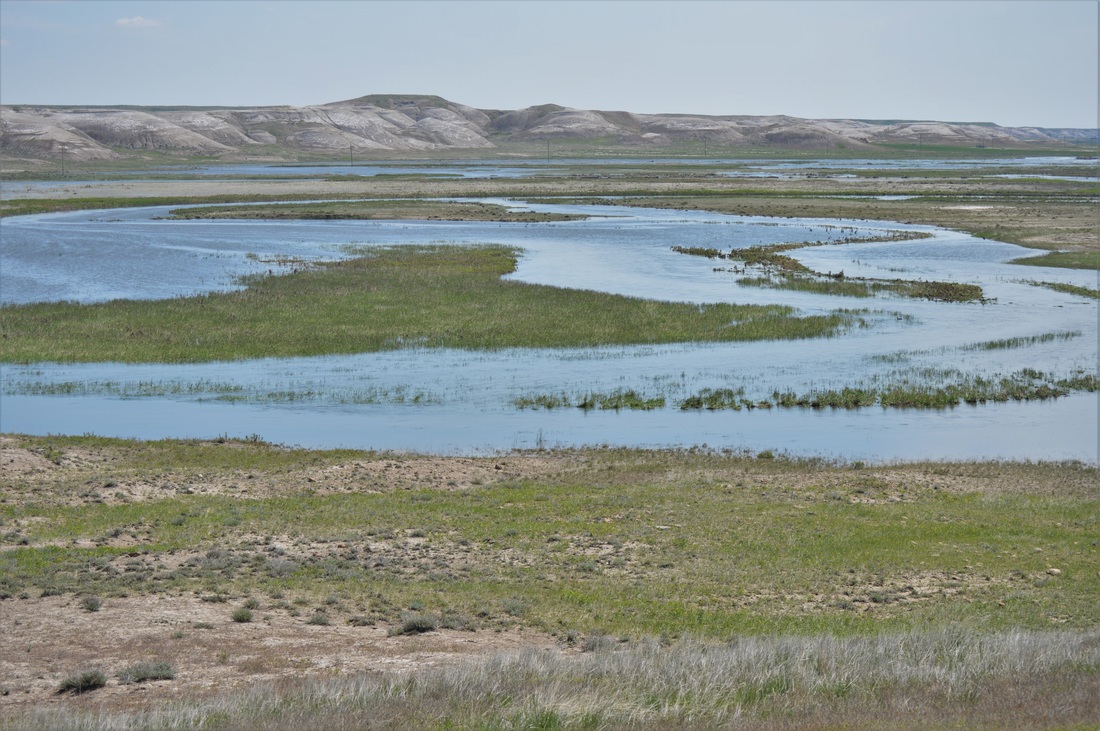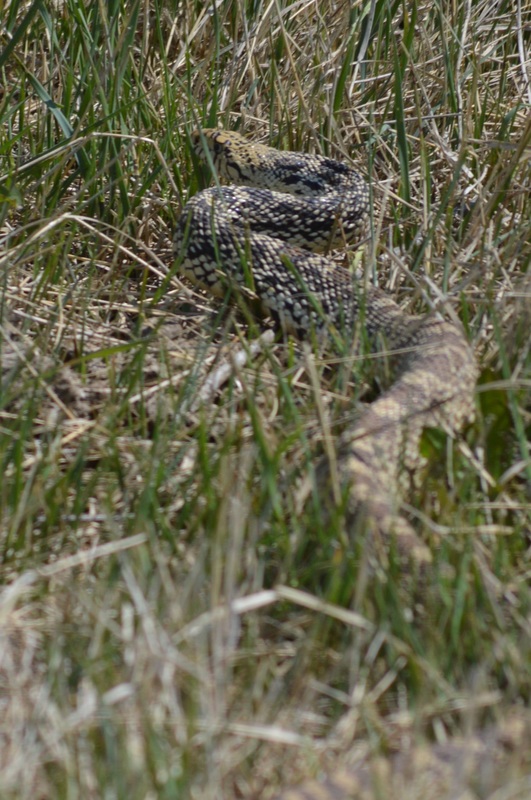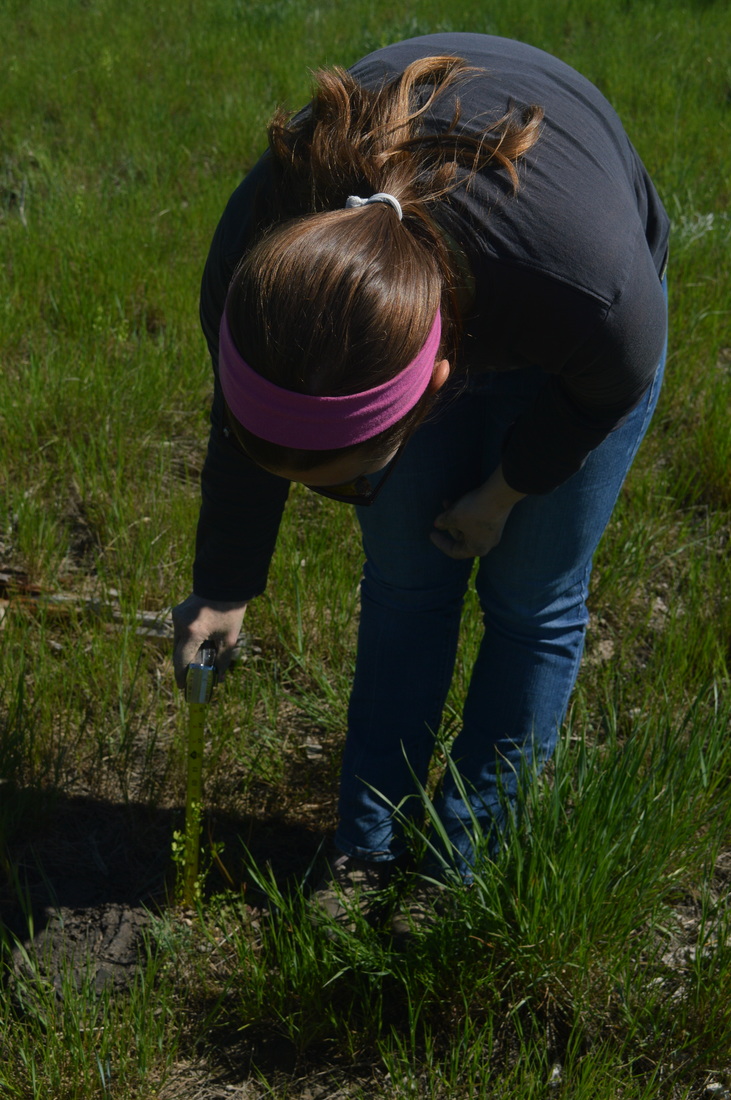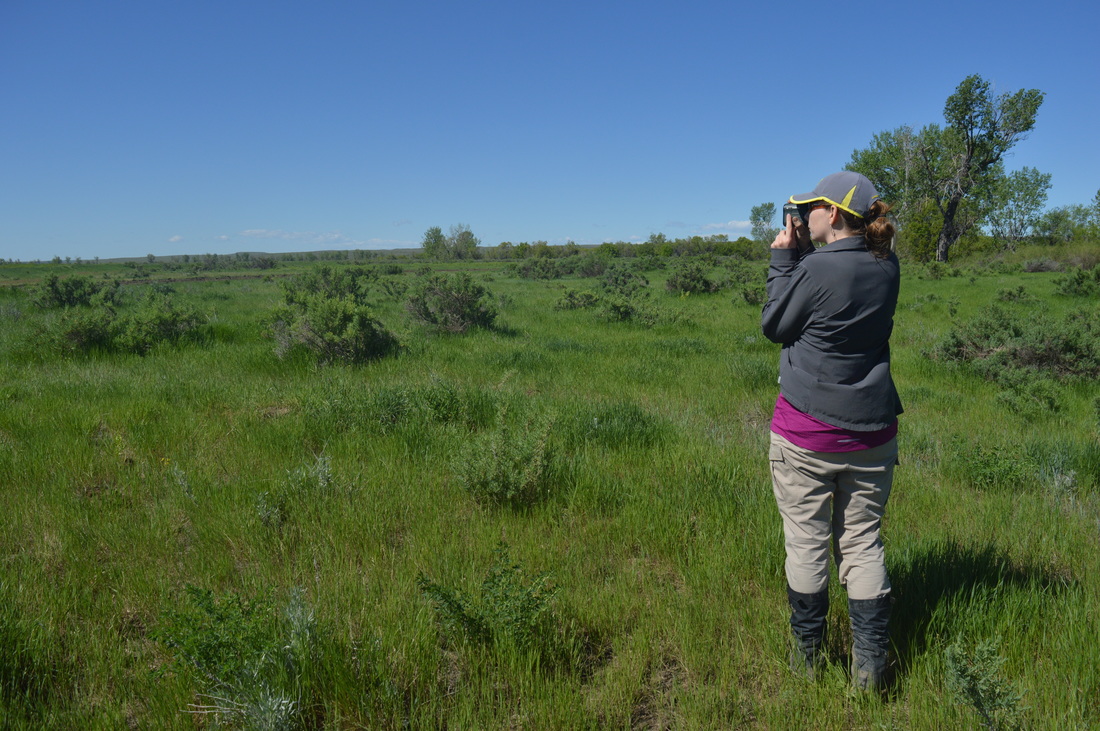By Aline Litt
Landmark Adventure Scientist
Landmark Adventure Scientist
Today the Landmark Crew culminated a long series of “foxtrots”. This is what we call the vegetation surveys that we are conducting in order to determine if there is suitable habitat for swift foxes (Vulpes velox) on the American Prairie Reserve. Hopefully, the final outcome of these surveys will be the reintroduction of this species to the area.
Wikipedia defines the foxtrot as “a smooth, progressive dance characterized by continuous flowing movements across the dance floor”. Landmark’s foxtrots are certainly long and progressive, however they are not always smooth because ticks, thick brush, snakes and flooding are all hazards present on our prairie dance floor!
Each of our foxtrot routes is about ten miles long. There are waypoints every half mile at which we conduct our surveying. The dance moves begin with recording location and ground cover in the greater area. We also take measurements of the viewshed in both directions perpendicular to the transect line. From here, we walk fifty yards, using the GPS to navigate in a straight line. Along the way, one person stops every ten yards to measure the length and type of plant that is directly on the line. The other person counts the number of greasewood and sage shrubs growing along the line, within arms’ length. This process is repeated every half mile until the end of our route for the day.
Since the swift fox is only twelve inches tall, it relies on shorter vegetation and flat expanses of prairie in order to look out for its primary predator – the coyote. Ideally, the results of this survey will indicate that the American Prairie Reserve has suitable habitat for the reintroduction of swift fox. It may not be for a while, but one day I hope to return to observe these cute canids benefiting from the results of our foxtrots!
Learn more about Landmark and other ASC projects on our website, the Field Notes blog, and by following us on Facebook, Twitter, and Instagram.

